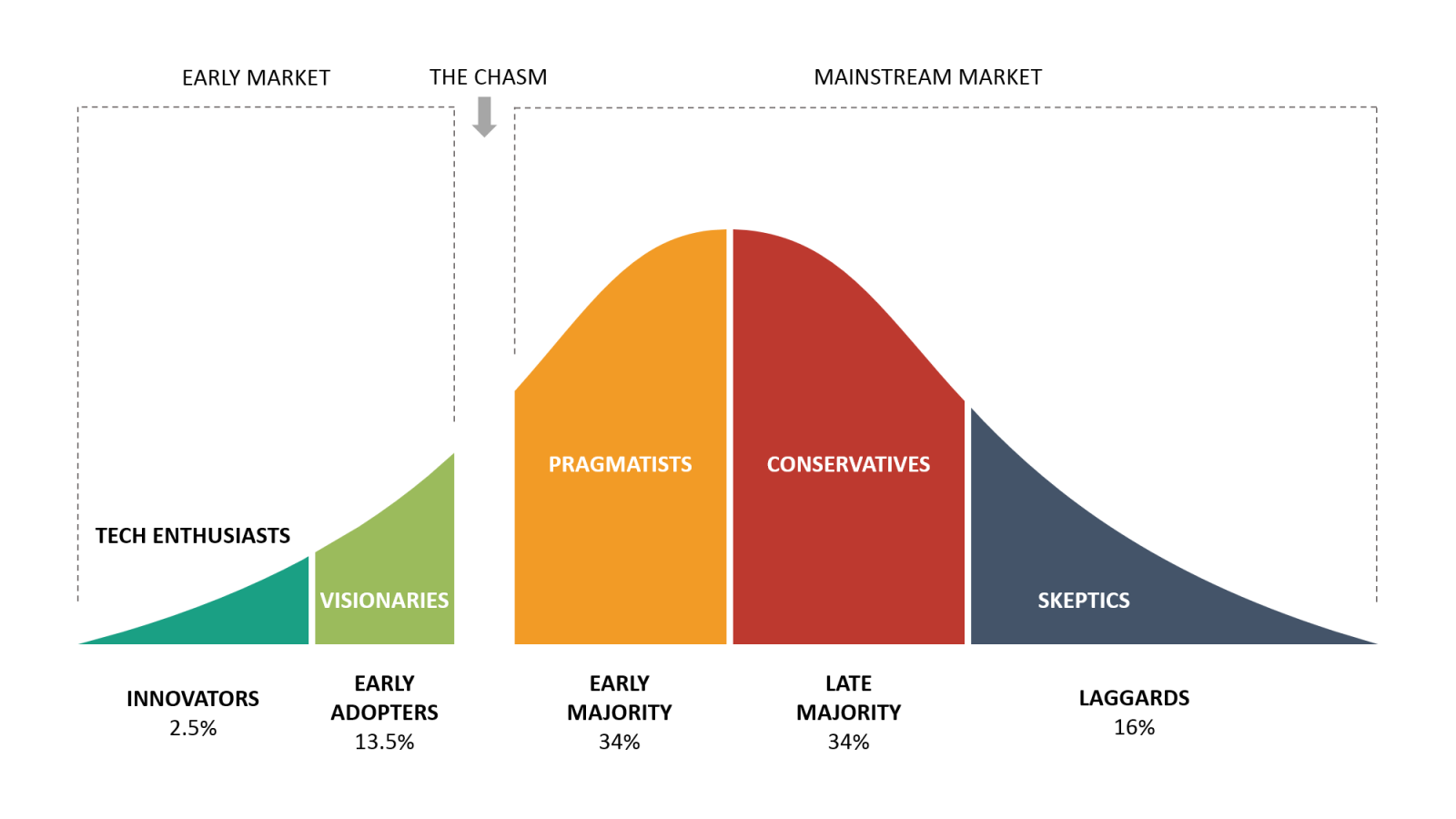What is Customer Adoption Curve
The Customer Adoption Curve is a graphical representation that shows the rate at which customers adopt a new product, service, or innovation over time. It illustrates how consumers in a social system react to a new offering, which can range from technology to lifestyle changes. This curve is fundamental for businesses and marketers to understand and anticipate how their products will be received by the market.

Technology Adoption Life Cycle
Stages of Customer Adoption Curve
The curve is generally divided into five stages, which represent the sequential groups of consumers who adopt an innovation over time.
Innovators
Innovators make up roughly 2.5% of the total population of potential adopters. These individuals are characterized by their willingness to take risks and their desire to be the first to try new products or ideas. They usually have financial resources, social connections, and the means to access cutting-edge technology. For innovators, the thrill lies in pioneering the unexplored.
Early Adopters
Following the innovators are the early adopters, who comprise about 13.5% of the potential adopters. They are more discerning in their choices than innovators but are still relatively quick to adopt new ideas. Early adopters usually have a higher social status and more social interactions than later adopters. They are often seen as opinion leaders, and their choices can influence the broader population.
Early Majority
The early majority represents approximately 34% of potential adopters. This group is more cautious and will adopt an innovation only after a fair amount of evidence and positive feedback is available. They often rely on recommendations and reviews from early adopters. The early majority is an essential group for achieving market penetration and growth.
Late Majority
Also making up about 34% of potential adopters, the late majority adopts innovations once they have become mainstream and widely accepted. This group is skeptical and requires substantial evidence of the benefits of the new product or idea. They depend heavily on word-of-mouth and personal experience testimonials.
Laggards
The final group, the laggards, represents roughly 16% of potential adopters. Laggards are the last to adopt an innovation and are often characterized by aversion to change and a preference for tradition. They may adopt new products only when their usual alternatives are no longer available or have become obsolete.
Chasm
The Customer Adoption Curve illustrates how markets adopt new products or innovations over time, but this adoption process includes a crucial stage known as "Crossing the Chasm."
The "Chasm" refers to a gap or significant barrier that exists between the early adopters and the early majority segments of the Customer Adoption Curve. The Chasm represents the transition from a market composed primarily of technology enthusiasts and visionaries (innovators and early adopters) to a more mainstream market. Many new products fail to successfully make this transition and end up being niche products adopted only by a segment of the market.
Crossing the Chasm is vital for achieving widespread market acceptance and reaping the economic benefits of scale.